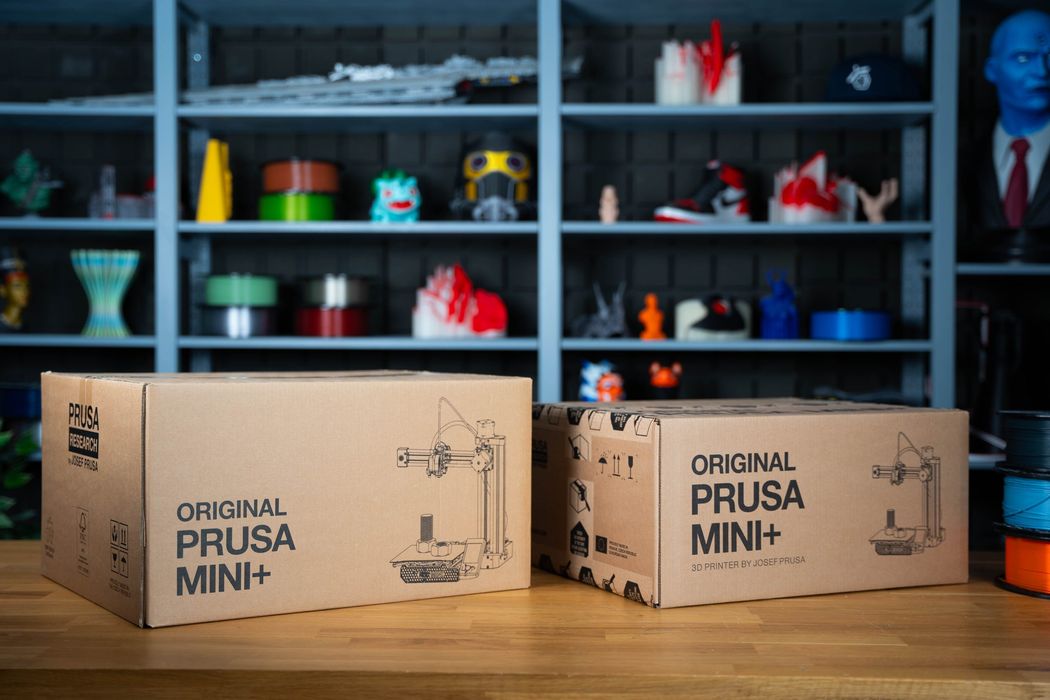
Prusa Research recently issued their annual Sustainability Report. Let’s take a look through it and see what we can learn.
Sustainability reports are becoming more common among big companies, as it is a way to demonstrate to the public that they do good things for the world. The more companies that produce sustainability reports, the more those that don’t look bad. Good on Prusa Research for preparing this report, their second, and one of the few in the 3D print industry.
The report in total is more than 60 pages, so it’s a lot to look through. Here are some highlights I noticed while perusing the document.
In 2023 the company produced 122,745 3D printers, which is a large number: over 10,000 per month. This is increased from 2022, when they produced “only” 101,232 devices.
Their production of Prusament filament also increased to 610 tonnes from 545 tonnes. That’s the equivalent of 610,000 1kg spools of material, or about 70 spools per hour all year long.
The number of 3D models on Printables doubled from 285,483 to 560,418 at the end of 2023. As of this writing, they seem to be in the 950,000 range, so it would appear that the site has gained sufficient momentum to capture the majority of 3D models from designers.
As a comparison, Thingiverse currently holds around 6.7M 3D models, so Printables has a long way to go. However, if they continue to double each year they might overtake Thingiverse in 2-3 years.
The sustainability report isn’t just a report; Prusa Research undertakes an annual process to increase sustainability factors via an internal survey and direct work with suppliers.
Microplastic pollution is the major concern with 3D printing these days, and Prusa Research added a filter on their global map to help operators find recycling depots that can accept 3D print waste. This is good, but the problem is that there are very few places to do so at this time. Europe seems to have the most, but North America has only a handful of reported depots. There are likely more that haven’t been added to the map, but unless it’s at a handy local location for operators, it’s not useful.
Prusa Research contributed a number of organizations around the world, including Médecins Sans Frontières, Kijenzi in Kenya and a number of Ukrainian organizations.
There’s a big section in the report on their carbon footprint, a staple of sustainability reports. Unfortunately Prusa Research is still publishing their measured footprint from 2021. This is understandable as it requires considerable cost and effort to prepare these analyses. However, they should do so on a regular basis in order to demonstrate they are moving the green needle.
Nevertheless, they do list a number of activities that should reduce the carbon footprint, even if it wasn’t directly measured. These include the introduction of recycled materials, reducing shipping through in-country repairs in the US, and reducing transport requirements elsewhere.
One interesting item is that they are searching for a new corporate home. A relocation would allow them to undertake green activities on the new building, as they cannot do so in their current leased space. This might include solar power or other carbon mitigation strategies.
A very interesting step was to decrease the volume of their Prusa MINI+ shipping box from 53L to only 33L. To the individual receiving the box it won’t make much difference. Instead, the benefit comes in the shipping: if you can cram in 37% more boxes into a shipping container, you need 37% fewer shipping containers. That could help contribute to the reduction of shipping emissions. It also reduces the amount of cardboard used.
While they increased electricity consumption by two percent this year, they increased revenue even more, making them more electrically efficient. A similar ratio occurred in their corporate water consumption. Note that over half of their energy comes from fossil fuels, so it’s no surprise they are seeking solar solutions.
One area for improvement seems to be the generation of waste. Prusa Research increased their waste production by 41% in 2023 over 2022. However, some of this was one-time changes, where they performed building construction, and they moved some activities in-house to save transport — but added the waste from the process to the total.
For warranty claims, the company reported an increase in claims over 2022. While the absolute number of claims per warranty is very small (under 0.5%), the number apparently went up due to the introduction of new models.
There’s much more in this very interesting report. I’m hoping more 3D printer manufacturers issue sustainability reports.
Via Prusa Research
